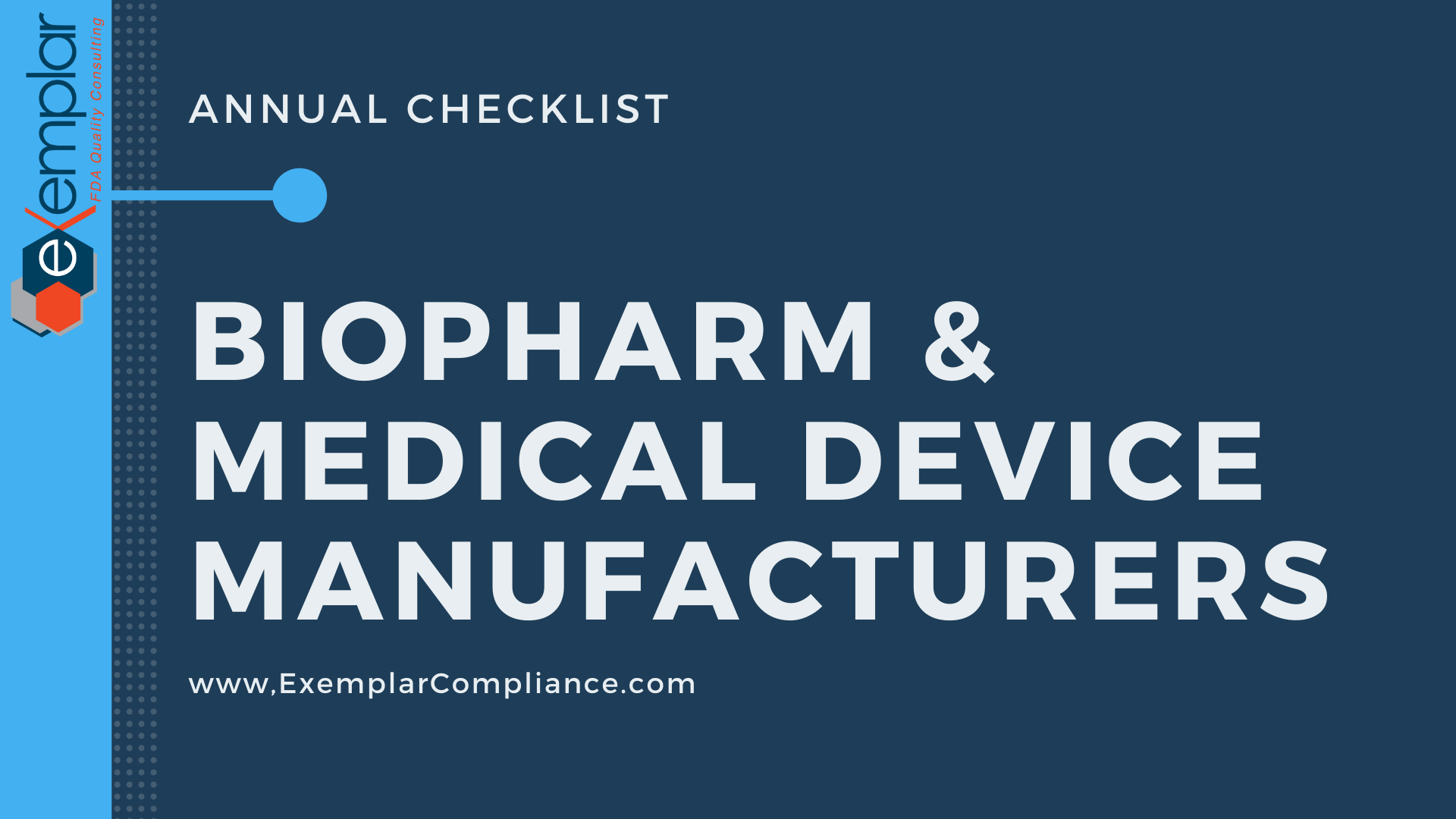With all of life’s daily activities, it is easy to lose sight of the requirements that keep your facility running smoothly. Quality checklists are a great way to make sure you don’t forget the important things that keep your process and products in compliance. Here is a list of helpful items for Biopharma and Medical Device companies to consider annually. #QualityMatters
A Top 10 List:
1. Review your quality manual
Dust off that Quality Manual and review it with fresh eyes. Make sure that it still accurately represents your facility, products, and quality system. Ensure referenced standards are still current.
2. Review your validation plans
Review your most current validation plans and make sure they are still representative of your process and products. Open a change control to update any out of date plans. Schedule any additional testing needed to address validation gaps. Be sure to evaluate any potential product impact.
3. Conduct (or plan for) your next Annual Product Review (APR) or Management Review Meeting (MRM)
These periodic reviews are critical for ensuring that your processes are performing as intended. Perform these activities (as applicable) according to your internal procedures. Make sure to formally document the reviews and the persons present. Disseminate any important information to the relevant departments.
4. Review and update your internal audit schedule
Like my yoga teacher says, it is time to look within! Take a look at your internal procedures for your process and your quality system. Make sure you are conducting internal audits of your processes according to an approved audit schedule or use this time to create an audit calendar. Ask for a little help when needed.
5. Review and update your supplier qualification program
New and existing suppliers should both have robust qualification documentation. Review existing (old) suppliers to make sure their vendor files are updated and complete. Review your supplier qualification program and formally schedule supplier audits for the next 12 months. Ask for a little help when needed.
6. Review your schedule of expected external audits
Now is the perfect time to start planning! Consider the following audits: customer audits, regulatory body audits, notified bodies, potential acquisitions, corporate mergers, etc. Schedule anticipated external audits. Put these on a formal audit schedule and communicate to the relevant subject matter experts. Be sure that staff hasn’t scheduled vacation time during critical audits. Ensure that conference rooms are booked and support staff is available to retrieve documentation. Ask for a little help when needed.
7. Review training curriculum
Review your training curriculum by department (or by each employee). Have department or area owners review the assigned training to ensure that it is accurate for their team. Remove old training that is no longer required. And don’t forget to evaluate training needs for commonly forgotten areas like sales and marketing!
8. Schedule a periodic review of policies and SOPs
Policies and procedures should be updated as your processes and facilities change. Make sure your documentation (Plans, Policies, SOPs, WI, Forms) reflect any changes in your facilities, processes, distribution program, or quality system (QS / QMS). These are living documents that should be kept current. (Take Note: Outdated documents can be easy findings during an audit or inspection.)
9. Conduct a walkthrough of your facility with fresh eyes
Just like the clutter in your garage, you will eventually become immune to all the clutter in your facility. Walkthrough your facility, warehouse, and laboratory space with a renewed focus. Take a couple of colleagues and tour the site to create a checklist of items to clean and repair. Set a completion date for each task to make sure these items don’t linger. Hold area leads accountable for keeping their areas clean and tidy.
10. Review your stability program and product labeling
Conduct a review of your stability program (preferably under a formal internal audit) and evaluate your existing program, procedures, plans, storage, and testing. Review the product labeling including packaging and inserts. Ensure the labeling aligns with your stability and expiry dates. If you plan to extend your shelf life, make sure you have a plan in place to complete this activity.






